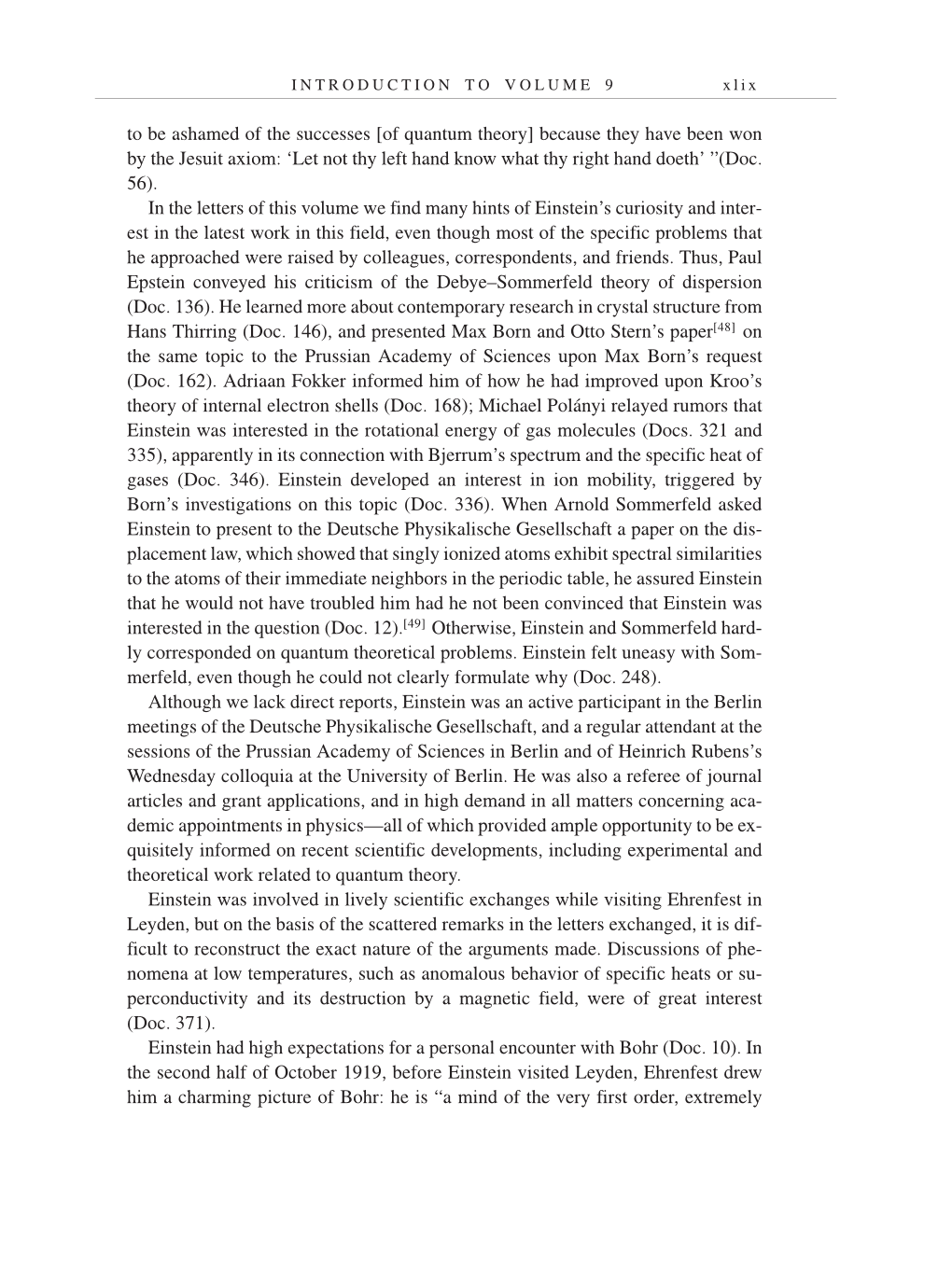I N T R O D U C T I O N T O V O L U M E 9 x l i x
to be ashamed of the successes [of quantum theory] because they have been won
by the Jesuit axiom: ‘Let not thy left hand know what thy right hand doeth’ ”(Doc.
56).
In the letters of this volume we find many hints of Einstein’s curiosity and inter-
est in the latest work in this field, even though most of the specific problems that
he approached were raised by colleagues, correspondents, and friends. Thus, Paul
Epstein conveyed his criticism of the Debye–Sommerfeld theory of dispersion
(Doc. 136). He learned more about contemporary research in crystal structure from
Hans Thirring (Doc. 146), and presented Max Born and Otto Stern’s
paper[48]
on
the same topic to the Prussian Academy of Sciences upon Max Born’s request
(Doc. 162). Adriaan Fokker informed him of how he had improved upon Kroo’s
theory of internal electron shells (Doc. 168); Michael Polányi relayed rumors that
Einstein was interested in the rotational energy of gas molecules (Docs. 321 and
335), apparently in its connection with Bjerrum’s spectrum and the specific heat of
gases (Doc. 346). Einstein developed an interest in ion mobility, triggered by
Born’s investigations on this topic (Doc. 336). When Arnold Sommerfeld asked
Einstein to present to the Deutsche Physikalische Gesellschaft a paper on the dis-
placement law, which showed that singly ionized atoms exhibit spectral similarities
to the atoms of their immediate neighbors in the periodic table, he assured Einstein
that he would not have troubled him had he not been convinced that Einstein was
interested in the question (Doc.
12).[49]
Otherwise, Einstein and Sommerfeld hard-
ly corresponded on quantum theoretical problems. Einstein felt uneasy with Som-
merfeld, even though he could not clearly formulate why (Doc. 248).
Although we lack direct reports, Einstein was an active participant in the Berlin
meetings of the Deutsche Physikalische Gesellschaft, and a regular attendant at the
sessions of the Prussian Academy of Sciences in Berlin and of Heinrich Rubens’s
Wednesday colloquia at the University of Berlin. He was also a referee of journal
articles and grant applications, and in high demand in all matters concerning aca-
demic appointments in physics—all of which provided ample opportunity to be ex-
quisitely informed on recent scientific developments, including experimental and
theoretical work related to quantum theory.
Einstein was involved in lively scientific exchanges while visiting Ehrenfest in
Leyden, but on the basis of the scattered remarks in the letters exchanged, it is dif-
ficult to reconstruct the exact nature of the arguments made. Discussions of phe-
nomena at low temperatures, such as anomalous behavior of specific heats or su-
perconductivity and its destruction by a magnetic field, were of great interest
(Doc. 371).
Einstein had high expectations for a personal encounter with Bohr (Doc. 10). In
the second half of October 1919, before Einstein visited Leyden, Ehrenfest drew
him a charming picture of Bohr: he is “a mind of the very first order, extremely
